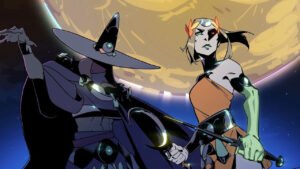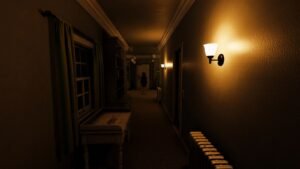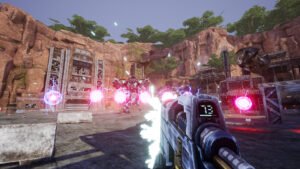Strategy games, real-time or otherwise, have been on something of a downturn in recent years. The emphasis on putting players in first person, “right in the battlefield” has been a dominant theme of contemporary games. But all of that looks set to change, with games like Starcraft II making a triumphant return, and Shogun 2 is another classic that is finally getting a sequel after 10 years of absence from the field.
While Creative Assembly is largely known today for their Total War series of games that range from campaigns of the Roman Empire to the Napoleonic era, the one that started the franchise off was Shogun: Total War in 2000. The sequel looks to expand on everything that early title promised, and more.
A Battle Of Generations
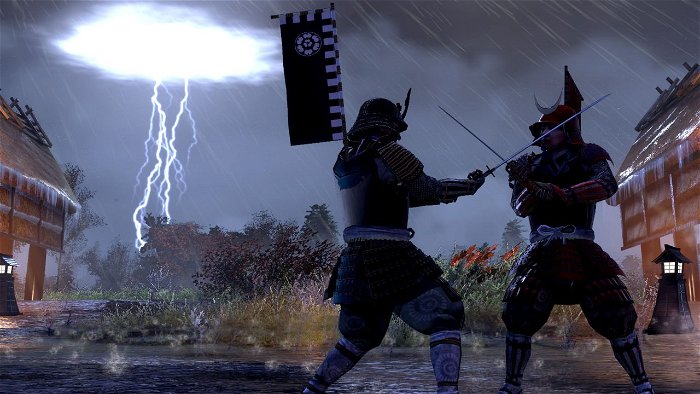
Shogun: Total War was a trail-blazer for its time, using the emerging 3D graphics card technologies to present a pseudo-3D experience, with real polygonal terrain combined with traditional 2D sprites for the troops to create a battle field with full camera control that supported up to 10,000 troops in conflict, an amazing feat in its day. The sequel benefits from 10 years of advances in graphic power, with fully 3D environments and troops and an astounding 56,000 soldiers battling across the varied terrain.
Like its predecessor, Shogun 2 is divided into two components, a real-time strategy section that oversees actual battles, and a campaign section, presumably turn-based like Shogun, where players can look at the “big picture” and negotiate, ally or declare war on various factions struggling for control, this time in 16th century Japan, in the wake of the Onin War. Details on the campaign side were sparse for our behind closed doors preview, as the focus was on the battle system itself, but what was discussed was the “generational” aspect of the game. Players don’t just control a single leader, but rather control the fate of an entire family line as it battles over the years to gain control of Japan. Presumably this means that family alliances, political marriages and other factors all contribute to how your family progresses over the years during the slow rise to power.
The real show-stopper however, is when the campaign stops and the fighting begins.
Evolution Of The Battlefield
It should come as no surprise that the biggest improvement to Shogun II can be summed up in the word “More.” There are more troops, more environments, more animations, more tactics, more of nearly everything. A series that once had to resort to sprite-based troops to keep from killing PC graphics cards of the day now has fully modeled, motion-captured Samurai, horsemen and infantry fighting each other without mercy.
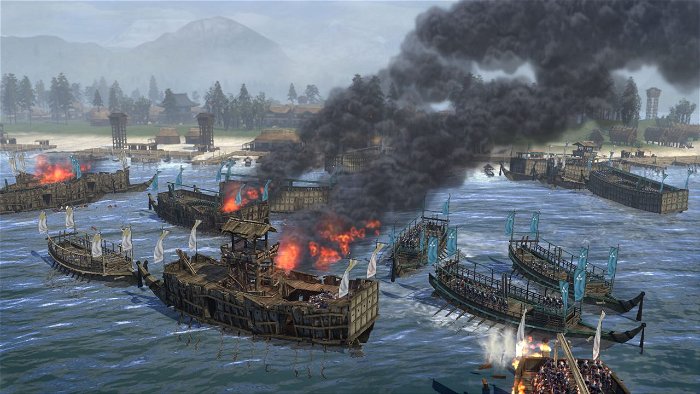
The environments in particular demand attention. It’s not evident at first, but an enormous amount of horsepower is being used to render the world, as Creative Assembly staff demonstrated a battle set at night where they pointed out each individual light in the environment is an independent, real time light source, The terrain sports carefully modeled trees, hills, and rural structures like huts and shacks while fortresses loom in the background. Into this mix of trees, hills and buildings stand thousands of troops, in formation, some on foot, others tucked away in the trees on horseback, waiting for a signal to move.
While the mechanics of the battle itself seem straightforward enough, utilizing a system of command and execution that stretches as far back as the original Shogun, the biggest critical factor to the outcome of battles is one that can’t be seen. Like the original game, troop morale plays an integral role in determining the outcome of conflicts but it has become more complex. Soldiers can weaken—or even be routed entirely—when their leading general, or a “hero unit” such as revered swordsman, goes down in front of his troops. Conversely, troop morale for the attacking units can go up on witnessing such events, adding to their combat effectiveness. There is even an allowance for more subtle morale modifiers such as troops being led by an incompetent, hated General, thus lowering morale as long as he commands soldiers, and a surprising rise of troop morale should that same hated General be killed. How the troops feel in the world of Shogun takes on the same importance as what units are used to attack.
Speaking of which, while Creative Assembly has said that 30 units will be available for use in battle, the basic “Paper-Rock-Scissors” mentality of the actual combat remains largely unchanged. So foot soldiers can be more easily taken out by horsemen, while archers can easily take out said horseman, and in turn can be defeated by foot-soldiers. This all depends on the battle conditions however, as demonstrated by Creative Assembly staff. In our demonstration, a group of horsemen were taken along a lengthy detour around the battlefield so was to come up behind an enemy group of archers that were hidden in the woods. Normally, charging head on with the archers would result in death, but the forest the archers were using as cover also had the disadvantage of putting them in a confined space when the horsemen charged up behind them without warning. So while the various units will have natural advantages against other units, those self-same advantages can be negated through the proper use of placement, timing and tactics.
Beyond The Soldier
Other changes that have occurred to Shogun are a complete revamp of sieges. Fortresses can be stormed, but it’s not as simple as the original, with troops now able to attack and defend a fortress through various means. Enemies can be channeled into killzones at various chokepoints in the fortress, allowing for wars of attrition where defenders can allow the enemy into certain areas while still retaining a chance to wear them out or drive them off.
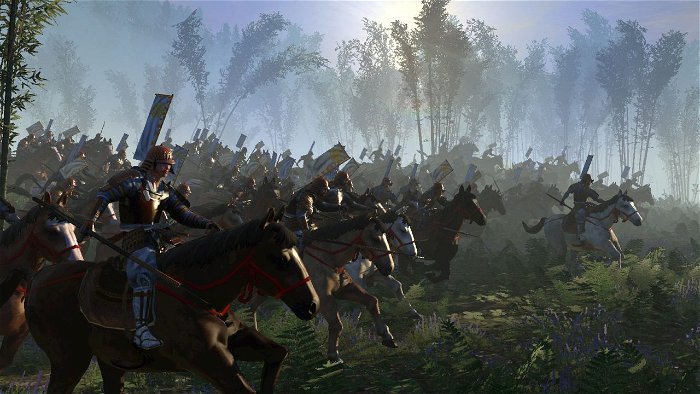
There are also now naval units in the game but at this time, it looks like naval battles and ground battles are separate things, with no combined arms battles implemented just yet. While Creative Assembly has said that work is being done to see if it’s possible to mix units, they are making no promises about whether this will be a feature they can squeeze into the game by the time it launches.
The atmosphere of the game is also sticking true to Creative Assembly’s penchant for historical accuracy. Concept artwork for the game revealed a loving recreation of period Japanese artwork, and the dialog for the game will be included in both English and Japanese with subtitles for those that prefer a more authentic experience.
There’s little doubt that Shogun 2: Total War is going to be an order of magnitude larger compared to the size and scope of its predecessor. What remains to be seen now is how many of the promised features make the shipping date, what the campaign mode is like, and how multi-player stacks up, all elements Creative Assembly wasn’t ready to discuss at this time.


